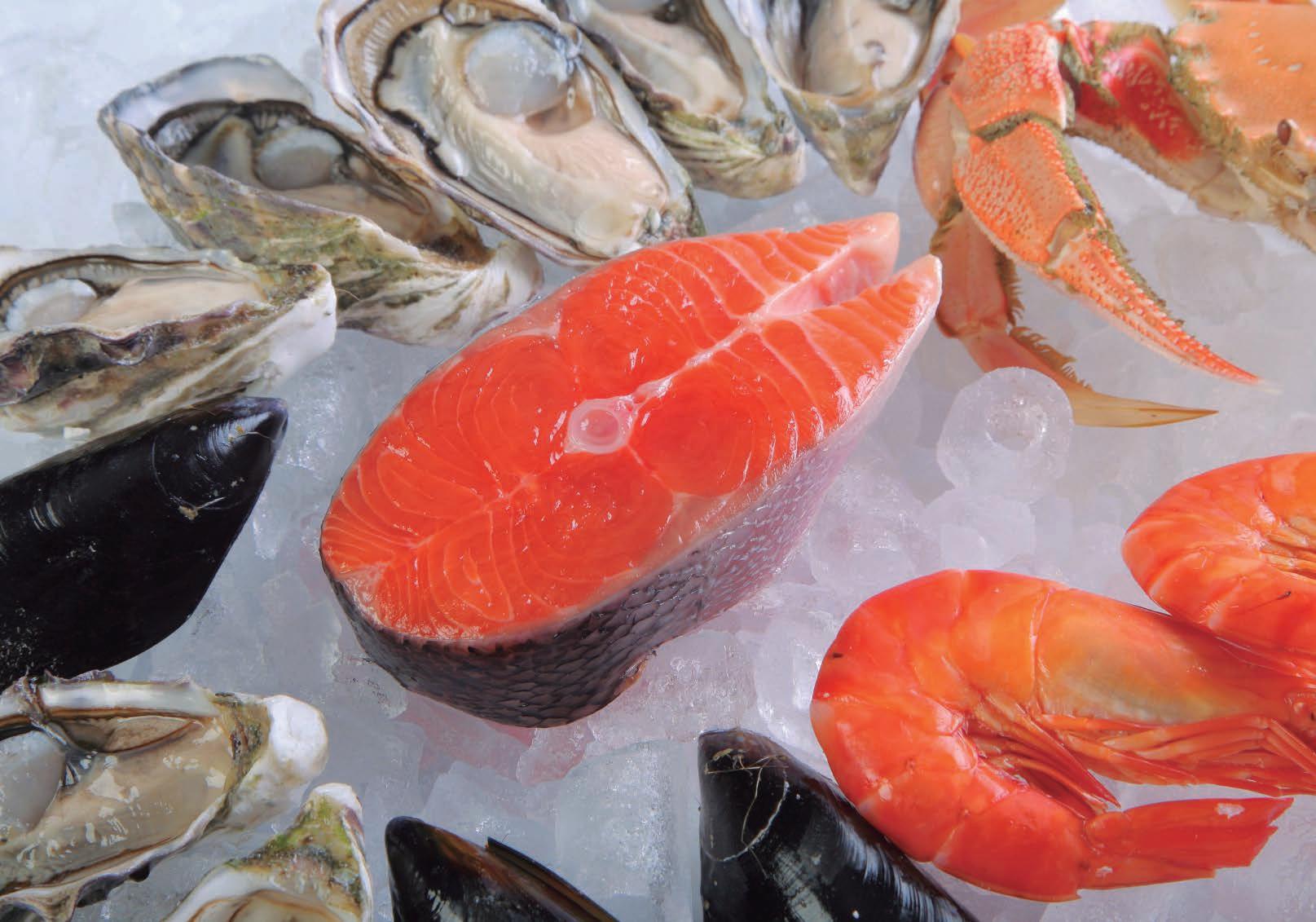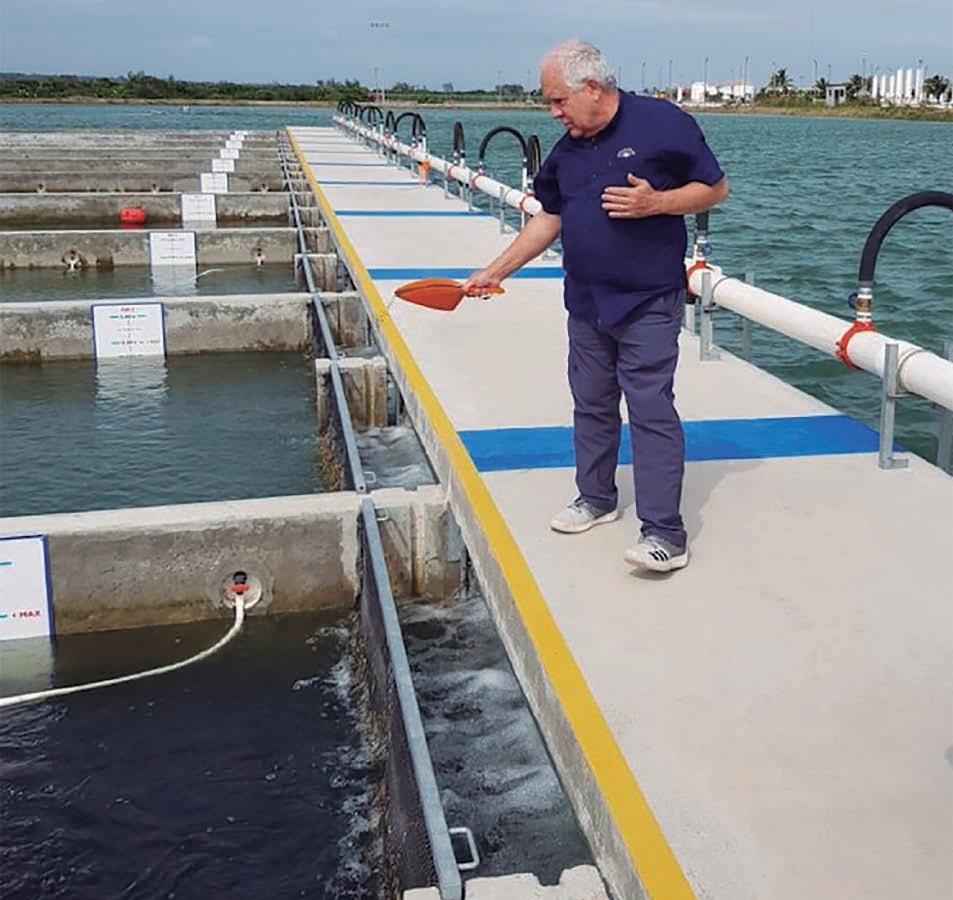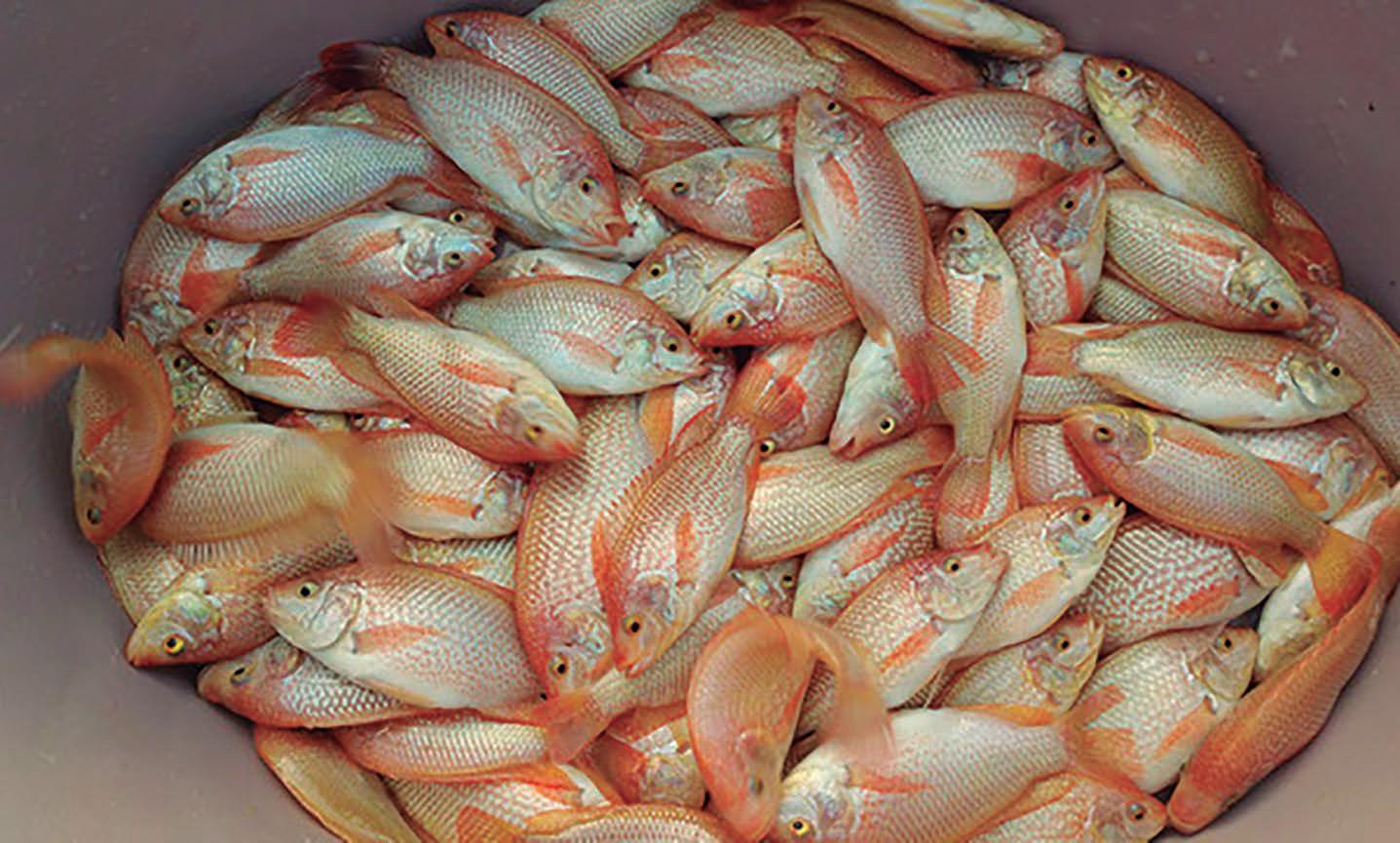
4 minute read
SALMONIDS
Breeding programmes and genetic improvement in salmon and trout
By Asbjørn Bergheim*
In the early 1970s, trials demonstrated the large potential of familybased breeding programmes in salmon farming. In these trials, gametes from salmon were collected from 40 Norwegian rivers and formed the basis of estimation of genetic parameters and the first commercial breeding program. Strains from this and other breeding companies in Norway, UK, Netherlands and Chile dominate global salmon aquaculture today.
Figure 1
Breeding stair, i.e. a step is the generation interval (4 years and 3 years for salmon and trout, respectively), while the rise is the progress generated by the selection (AquaGen, 2005). F or the first generations of farmed Atlantic salmon in Norway it took 40 months to grow to a weight of 4 kg. Today, the time period has been halved and it has been estimated that a significant part of this improvement is due to systematic breeding over the past 12 generations or so. The Norwegian breeding programme focused on increasing growth rate, with estimates of genetic gain per generation of approximately 15% (see Figure 1). Selection of fast-growing salmon through several generations has also contributed to more efficient utilization of feed nutrients. According to the R&D organisation, Nofima, today’s salmon use 30% less feed for growth.
The high level of genetic gain “may be due to in part to the selection intensity associated with the high fecundity of salmon (several thousand offspring per female) and in part to a very recent domestication history, providing high levels of genetic variability influencing traits of importance for farming” (Houston & Macqueen, 2019). Heritability (h 2
) for economically important traits, i.e. the degree of variation in a phenotypic trait in a population that is due to genetic variation between individuals in that population, is of medium magnitude (e.g. 0.3 – 0.5 for salmon carcass quantity traits). Besides, the rather low generation interval contributes to high yearly genetic gain.
From the 1990s onwards, salmon breeding programs became more advanced and the breeding goals expanded to include traits such as disease resistance, age at sexual maturation and fillet characteristics. Introduction of quantitative trait locus analysis (QTL) explained the vast majority of variation in host resistance to the devastating virus disease IPN. One single gene was found to explain approximately 80% of the genetic variation in resistance. Consequently, selective breeding resulted in a significantly reduced number of IPN outbreaks. According to the Report on Fish Health 2013, the Norwegian aquaculture industry experienced a 75% reduction in the incidence of the disease from 2010 to 2013. Genomic selection is now considered the state of the art for application of genomics to genetic improvement.
Investments in efficient breeding programs are most cost effective. It has been found that the cost-benefit ratio of such programs in fish can range from 1 to 8 to 1 to 60. Notable


Figure 3
Boxplots of individual preference values of the six most important traits for genetic gain in rainbow trout. TGC: thermal growth coefficient, Surv: survival, FCR: feed conversion ratio, CF: condition factor, FIL%: fillet percentage, LMat: late maturation (Sae-Lim et al. 2011, Wageningen University).
expected genetic gains for selected families also include the emphasized diseases furunculosis and ILA (Figure 2), but with less significant progress compared to that for IPN. The estimated progress for growth in freshwater is twice that for growth in the subsequent seawater stage.
Salmon contain many different omega-3 fatty acids. Research has shown that some salmon families have higher levels of the healthy fatty acids in their muscle tissue than others. Based on findings at Nofima, the heritability of DHA is comparatively high (26%), while the other main omega-3 acid, EPA, has low heritability. The researchers concluded that there is a great potential in increasing DHA through selective breeding.
The breeding program for trout in Norway is mainly used for production of large sea-running rainbow trout, with a focus on traits such as reduced deformities, age at sexual maturation, body shape, skin and filet colour and growth rate.
Breeding trait preferences will vary depending on commercial products and farming environments. In a study performed at Wageningen University, the Netherlands, questionnaires were distributed to rainbow trout farmers from five continents to rank the most

important traits for genetic improvement (Figure 3). The highest ranked traits were growth rate, survival, feed utilisation, condition factor, fillet percentage and late maturation. However, there were large differences between individual respondents, especially related to temperature conditions (high – low altitudes) and farm system (flow-through vs. RAS). Late maturation and fillet percentage were preferred traits for producers of large fish, while improvements in growth and survival were of greater importance to RAS farmers. This is largely due to the fact that high fish densities and feeding rates in RAS result in increased dissolved CO2 concentrations, reducing fish health and growth.
Dr. Asbjørn Bergheim is a consultant at Oxyvision Ltd. in Stavanger. His fields of interest within aquaculture are primarily water quality vs. technology and management in tanks, cages and ponds, among others. asbjorn@oxyvision.com








